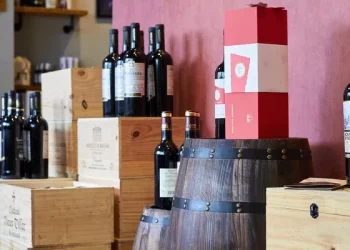TECNAM is a private aircraft manufacturer with more than 50 years of experience in design and manufacture.
The company has designed and manufactured dozens of models, thousands of aircraft, the products sell well in the United States, Canada, South Africa, Australia, Europe and other countries, become one of the world pilots favorite models.
The Tecknan P92 is a two-seat, single-strut, braced high-wing leisure UL aircraft.
The main features of the design and construction are low cost for maintaining weight.
The wing box, fuselage and tail were submitted to the final test load and were designed and built in full accordance with international airworthiness standards.
The P92 classic performance and flight qualities are so superior that it compares these aircraft according to FAR 23 certification.
The wing structure consists of a single SPAR metal twist, with a leading edge of a single molded reinforced FRP.
The latter feature in the aerodynamics of the relevant part of the wing provides a clean surface, increases performance, eases separation and helps reduce maintenance and repair costs.
The forward fuselage section, which includes the cabin interior, is covered by a welded steel tube frame with an aluminum sheet.
The engine is low and the cowling slopes down the windscreen, so the forward view is excellent.
A rear window completes the 360 ¡ã view.
The cabin, with its oversized doors, is 1.05 meters wide, and this, combined with all the surrounding Windows, makes the plane look very spacious.
There is a large baggage area behind the seats.
The conventional twin control stick is forward, between the pilot’s legs, and there are two throttles, each pilot on the left.
Flight control was smooth throughout the trip.
A stilt switch is used to trim the spacing between seats with a position indicator on the dashboard.
Two engines are available: – ROTAX 912UL 80HP, liquid-cooled – ROTAX 912ULS 100HP, four-stroke, Water-cooled, four-stroke.
The propeller is available as an optional Airmaster constant speed propeller standard or three blade blades.
Wheel and hydraulic disc brake type of aircraft.
Brake handle controls located between the seats.
Hydraulic valves provide parking brake control.
The levered suspension rubber shock absorbers of the nose landing gear have been designed for basic training use to resist high impact loads.
Nose gear directly maneuvers dual rudder pedals.
The wing roots taper off, allowing visibility near the leading edge, especially at a steep turn.
A rugged core member collects wing struts and landing gear loads.
The deformation of the high steel tube frame can provide a good protection for the crew during an emergency landing.
The light alloy accent SKIN tail cone supports the empennage.The all-moving tail fin provides SIGNIFICANT LONGITUDINAL break HAND STABILITY AND control WITH MINIMAL DRAG and weight penalty power.
An extensive trim TAB completes the anti – “TAB,” features.
Two half-tail fins are quickly detachable for FIN’s light alloy cantilever structure, except for fiberglass tips.
Tail fin and rudder rib light alloy appearance.
Tecnam has now released the P92 Sea-Sky.
According to company officials, this is the sixth generation P92 product based on the successful P92 Echo Classic and P92 Eaglet.
Paolo Pascale, General Manager of Tecnam, said: “Our P92 Sea-Sky allows you to enjoy blue water and blue sky.
“He also pointed out that the aircraft” is not only used in the vast waters of the world, but also can take off and land on 29 percent of the Earth’s land area with our innovative four-wheeled retractable landing gear.”
“The Tecnam P92 Sea-Sky uses a 100-HP Rotax 912 engine and requires a takeoff and landing range of less than 200 meters (656ft).
The new water dispensers will be manufactured at Tecnam’s new composite production facility in Capua, Italy, which also manufactures Tecnam P2008 and Tecnam.
The origins of Tecnam can be traced back to the early activities of Italian brothers LuigiPascale and Giovanni Pascale, who were involved in the development and innovation of aircraft after the end of World War II. The aircraft designed at that time were named after the Partenavia number.
The latest market dynamics at any time to see, please pay attention to.












































